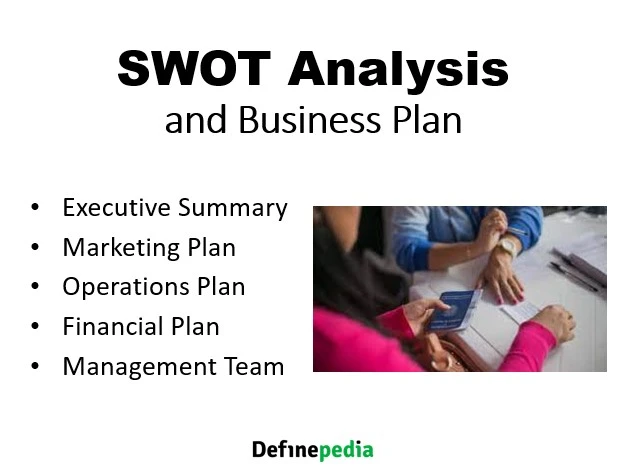What is a SWOT analysis?
A SWOT analysis is a strategic planning tool it allow businesses to analysis their company current position and potential in the market area. The SWOT stands for Strengths, Weaknesses, Opportunities, and Threats.
Basically, this analytical design helps organizations to gain a detailed understanding/idea of both internal and external factors that can impact their company or business to being success.
In a SWOT analysis:
- Strengths refer to the internal advantages, resources, and capabilities that give a business a competitive edge.
- Weaknesses are internal limitations and areas that need improvement.
- Opportunities are external factors and market conditions that a business can leverage to its advantage.
- Threats are external factors and challenges that can potentially harm the business.
Why is a SWOT analysis important for a business plan?
A SWOT analysis plays a important role in the business planning process for many reasons:
- Strategic Insight: It provides valuable insights into a company’s current position, allowing decision-makers to make informed strategic choices.
- Risk Assessment: By identifying weaknesses and threats, it helps assess risks and develop risk mitigation strategies.
- Goal Setting: SWOT analysis informs the setting of specific, achievable goals based on an organization’s strengths and opportunities.
- Competitive Advantage: It helps businesses understand their competitive landscape and how to differentiate themselves.
- Alignment: SWOT analysis ensures that the entire organization is aligned with a common understanding of its strengths and weaknesses.
Where does a SWOT analysis typically go in a business plan?

A SWOT analysis is typically included in the primary or we can say pre sections of a business plan, usually after the executive summary and before the detailed sections of the plan.
Basically, It sets the stage for the rest of the plan, providing a strategic foundation for subsequent discussions about marketing, operations, finance, and management.
Executive Summary
Basically, This summary provides a high-level overview of the organization’s strengths, weaknesses, opportunities, and threats. It acts as a snapshot or overview of the company’s strategic position and serves to interest the reader’s interest in the rest of the plan.
Marketing Plan
The SWOT analysis greatly influences the marketing plan. Here’s how:
- Identifying Target Markets: By analyzing strengths and opportunities, businesses can pinpoint the most lucrative target markets for their products or services.
- Developing Marketing Strategies: Strengths and opportunities can be used to create effective marketing strategies, while weaknesses and threats may suggest areas to avoid.
- Setting Marketing Goals: The SWOT analysis informs the establishment of realistic marketing goals that align with the company’s capabilities and market conditions.
Operations Plan
In the operations plan section, the SWOT analysis plays a pivotal role in operational decision-making:
- Resource Allocation: By recognizing strengths, businesses can allocate resources effectively, making the most of their advantages.
- Operational Strategies: Weaknesses and threats may require adjustments in operational strategies to mitigate risks and overcome challenges.
- Operational Goals: Goals set in this section are informed by the SWOT analysis to ensure that they align with the company’s operational capabilities.
Financial Plan
The financial plan benefits from SWOT analysis in the following ways:
- Identifying Financial Strengths and Weaknesses: By assessing strengths and weaknesses, organizations can determine their financial stability and areas needing improvement.
- Assessing Financial Risks: Threats find the SWOT analysis can translate into financial risks that need to be addressed in the financial plan.
- Developing Financial Goals: Goals in the financial plan should be set in way of the company’s financial strengths and the opportunities available.
Management Team
The SWOT analysis also plays a role in evaluating and improving the management team:
- Team Assessment: It can help identify the strengths and weaknesses of the management team, ensuring that the right individuals are in place to execute the business plan.
- Skills Enhancement: If weaknesses are identified, strategies can be developed to enhance the skills or qualifications of team members.
- Strategic Leadership: The analysis can guide the management team in making strategic decisions that capitalize on strengths and opportunities while mitigating weaknesses and threats.
My Perspective
SWOT analysis is a very important component of a business plan that provides a holistic view of the organization’s internal and external factors. Basically, It is strategically positioned in the plan to decision-making in various sections, including marketing, operations, ‘finance’, and management.
Was this helpful?
0 / 0